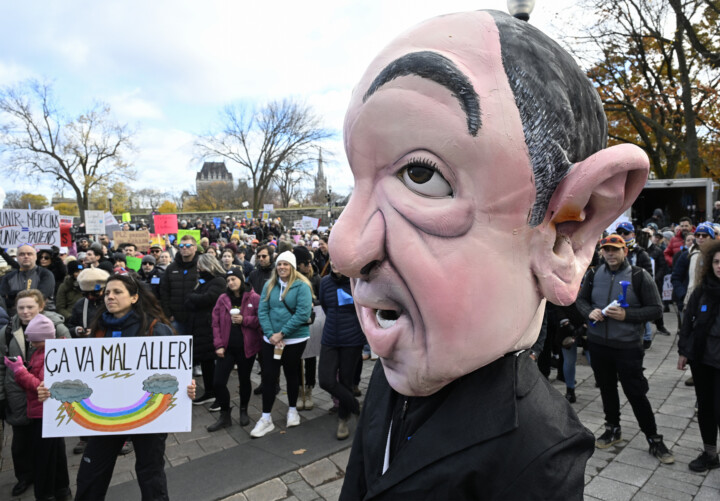One of the most controversial pieces of legislation in the country right now is Québec’s Bill 2, which ties a portion of physician compensation to performance metrics. Doctors’ groups, medical students, and individual physicians are vociferously opposed. Doctor-led demonstrations are anticipated in Montreal and elsewhere in the coming days.
They argue it unfairly penalizes front-line clinicians for system failures outside their control. They warn that it will drive physicians out of the province. And they describe it, not incorrectly, as a blunt instrument.
Yet despite these criticisms, Bill 2 may be getting at a deeper issue in Canadian health care that few are prepared to acknowledge. In its imperfect and incomplete way, the legislation is trying to confront an uncomfortable truth about our single-payer system: after 60 years of rationed medical-school spaces, government-set fee schedules, and a deliberately constrained supply of physicians, our model has socialized not only health-care financing but physicians themselves.
To see this more clearly, it helps to contrast the Canadian experience with the one I see in New York City, where my family is currently living. Here, doctors operate in something approximating a market. Supply isn’t centrally rationed. Medical schools can open and expand. Residency slots respond, albeit imperfectly, to labour-market needs. And physicians compete for patients. A high-performing specialist can earn multiples of what an average one earns. A poorly performing doctor sees it reflected in his or her income, reputation, and the viability of their practice.
The result is a health-care culture built around hustle: Doctors follow up, they respond to messages, they reorganize schedules, they work evenings, and they innovate in how they deliver care. The incentives aren’t perfect. As the American opioid crisis has tragically revealed, market pressure can lead struggling physicians to make desperate and harmful choices. But the underlying accountability structure is one that rewards effort, responsiveness, and ultimately performance.
Canada is the opposite. Our governments directly control the number of medical-school seats and residency positions. They set the fee schedule. They act as near-monopoly payers. The result is an administratively planned labour market that produces two predictable outcomes: chronic shortages and suppressed compensation.
In Canada, there’s a high floor and a low ceiling. Physicians are well paid by international standards, but the gap between a high performer and a middling one is narrow. There’s virtually no downside risk. A doctor with a nine-month wait list doesn’t lose income—if anything, the shortage insulates them further from accountability. With demand far exceeding supply, patients chase doctors, not the other way around. It’s not a huge surprise, therefore, that doctors are working less than they used to.
None of this is a moral critique of physicians. Most are dedicated, conscientious, and overstretched. But the reality is that incentives shape behaviour. In a system where incomes are protected, reputational signals are muted, and throughput has little bearing on compensation, it is unsurprising that Canadian health care produces slower service, more limited follow-up, and less responsiveness than Americans are accustomed to. It’s the predictable equilibrium of a guild-like structure that finds its origins in the medicare model itself.
View reader comments (1)
This is why Bill 2 is so jarring, and the reaction to it is so telling. It disrupts a professional compact that has held for decades: In exchange for strict limits on supply and predictable fee schedules, governments have avoided imposing meaningful performance expectations. Bill 2 breaks that deal. It introduces consequences for underperformance and rewards for physicians who do more.
Is the Québec government doing this in the best possible way? No. The legislation is bureaucratic and blunt. It holds doctors responsible for metrics they don’t fully control. It risks alienating a workforce already strained by years of pandemic pressures. And it proceeds without complementary supply-side reforms such as expanding medical-school seats, liberalizing residency slots, permitting more entrepreneurial clinics, or modernizing scope-of-practice rules.
But dismissing Bill 2 outright misses its significance. It’s among the rare provincial reforms that directly confront the core pathology of Canadian medicare. The system, by its design, limits supply, compresses compensation, and dulls performance signals, and then we wonder why access is inadequate.
A better approach would be to pair performance accountability with genuine liberalization, including more choice for patients, more competition among providers, more autonomy for clinics, and a system that rewards innovation rather than conformity. But Québec has at least acknowledged that the status quo is failing patients according to its own logic.
We shouldn’t romanticize or demonize doctors. We should recognize that, like everyone else, they respond to the structures in which they operate. Bill 2 may be clumsy and controversial, but it’s pointing at the right problem: A health-care culture shaped not by the character of its practitioners but by the incentives of the system itself.
Is tying physician pay to performance, like Quebec's Bill 2, a viable solution for Canadian healthcare?
How does Canada's physician compensation model differ from a market-based system like New York City's?
What are the core criticisms of Quebec's Bill 2, and what deeper issue does it highlight?











Comments (1)
An excellent critique! Now, apply that same logic to public education. When parents can choose the school of their choice using the tax vouchers for their children freely, you will see that professional competition will improve both public and independent schooling across the country. It’s high time this was enacted in Ontario!